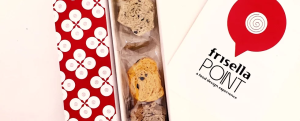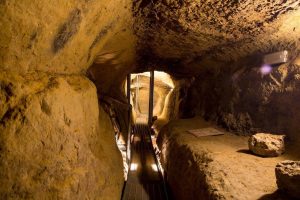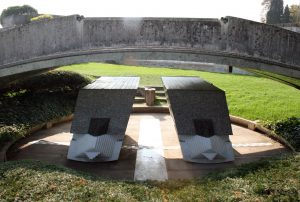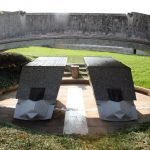“History is the key to understanding Sicily, even more necessary than to understand any other human community”, wrote the Sicilian writer Leonardo Sciascia. If there is a catalyst center for many historical events that determined the destiny of Sicily, this center is undoubtedly the Mediterranean.“Liquid continent” defined it Fernand Braudel. The most beautiful testimonies of the past of an island in the center of the Mediterranean are those that the sea itself has handed down to us. The Mediterranean is a “wonderful enigma” that does not explain all the complexity of secular events, but can put many things back in place to understand the events of a civilization like the Sicilian one, whose history has not been confined within its borders, but has largely outdated and this before globalization. At first Sicily was “kissed” by Mediterranean mythology, as told by Homer. Athenaeus of Naucrati wrote that while crossing the coasts of Sicily, sailors orient themselves by seeing the pediments of the temples of the Greek cities that were born on the coast. Thus they identified Syracuse, Gela, Akragas, Selinunte, without the need for nautical charts. The Mediterranean gods, who arrived with the most diverse “peoples of the sea”, and their temples, found a home in Sicily and took root there for a long time. According to tradition, Akragas dedicated a temple to the sons of Zeus, expressly invoked, as Homer tells us, to protect sailors from the storm; other sources tell us that not so much during navigation as above all in stops, in temporary landings or before departure or upon arrival, it was mandatory to invoke divine help through sacrifices, rites and ceremonies of various kinds. Sicily, therefore, with its religiosity united the sea of sailors to the sky of divinities. It was in Sicily that Carthaginians, Greeks and Romans contended for dominion in the Mediterranean.The war of the Empori, to conquer the coastal cities, the battle of Imera, which pitted Carthage against the two major powers of the island (Akragas and Syracuse), the Punic wars between Romans and Carthaginians, always ended with peace treaties written in blood who in the end affirmed the triumph of Rome, which therefore began to call the Mediterranean “Mare Nostrum”. Syracuse hastened to send Sicilian wheat to Rome and so the Roman emperors discovered that the island was the granary of the Mediterranean. Sicilian wine arrived with amphorae in Roman cargo ships in every city and the best fish sauce of the time (“garum) was made in Sicily… so the Mediterranean diet was born with the dishes of Sicilian gastronomy. It was the fertility of the territory and the availability of wheat that attracted the Arabs to Sicily, in addition to the desire to seize the major trading bases in the Mediterranean. They had settled on the African shore of the Mediterranean but knew that this was not enough to have control of the entire basin. During the Arab domination Palermo (Balarm in Arabic) distinguished itself for luxury and wealth and became a Mediterranean capital, with more than 300 mosques (as reported in 973 by Ibn Hawqal, Arab traveler of the Norman era) and a population of over 250,000 inhabitants , when in Rome or Milan there were no more than 20 or 30,000 souls. Sicily was in those times the garden of the Mediterranean and, reinserted in the maritime network of commercial exchanges, became the pivot of activities in the Mediterranean with a dominant role also in the cultural field. As the Italian historian Antonio De Stefano states: “The Sicilian Arab culture, since the time of the Kelbite emirs (948), had already reached a prodigious growth. Studies in theology and jurisprudence, medicine, astrology and mechanics, grammar, philology and history had flourished, and above all poetry had flourished. Most of the scholars and scientists had also been poets ». Within the Mediterranean, between two opposite shores, the African and the Sicilian, the cultural influence has been so profound that even today, in fact, the terminology of Tunisian fishermen is in Sicilian dialect, while many Sicilian words of the peasant world are Arabic. The Italian historian and Arabist Umberto Rizzitano, during a conference held in Tunis, highlighting the similarity that makes the Ifriqyya and Siqillyya twins and equal in the Mediterranean, made an appeal hoping for a reconciliation of the peoples who live in these two shores of the Mediterranean. He suggested twinning from Palermo to Qayrwàn, from Mazara to Monastir, from Trapani to Sousse, and from Syracuse to Sfax. The conference was thus entitled “Ifriqiyyà et Siqilliyyà, un jumelage méditerranéen” (Africa and Sicily, a Mediterranean twinning). In a world that sails without a compass, this can also be an ancient but always current way of discovering the true meaning and true destiny of this sea in the history of the Mediterranean: the right place where peoples can begin to live together in peace. and in prosperity.
The Mediterranean traces the routes of civilization

Intesa vincente. A Lecce la frisella incontra il design con Frisella Point Valorizzare il cibo della tradizione attraverso l’unione delle eccellenze del territorio e del linguaggio contemporaneo dell’estetica a tavola.
A pochi passi dalla Basilica di Santa Croce e da Porta Napoli, la frisella, regina della convivialità delle tavole estive salentine, ha trovato il proprio regno. Frisella Point è un intimo spazio interno, con dehors su piazzetta Santissima Addolorata 14, che si propone al pubblico come “ristorazione culturale”, per valorizzare un prodotto semplice della tradizione […]
Continua a leggere
Il labirinto di Porsenna
*di Bianca Sestini* Oltre al suo magnifico lago, gli Etruschi sono il motivo principale della fama di Chiusi dentro e fuori dalla Toscana. Stando a fonti latine, sarebbe stato uno dei primi insediamenti di questa antica civiltà. Per alcuni la città fu fondata da Telemaco, il figlio di Ulisse, per altri dall’eroe Cluso. Da allora, […]
Continua a leggere
L’inno all’amore della Tomba Brion
*di Carlo Piano* La Tomba Brion è la storia di un amore scritta con acqua, aria e cemento armato. Quando Onorina Tomasin chiese a Carlo Scarpa di creare il mausoleo per ricordare il marito Giuseppe Brion, improvvisamente scomparso, lui accettò a una condizione: doveva avere la parola della vedova che non si sarebbe mai risposata. […]
Continua a leggere









